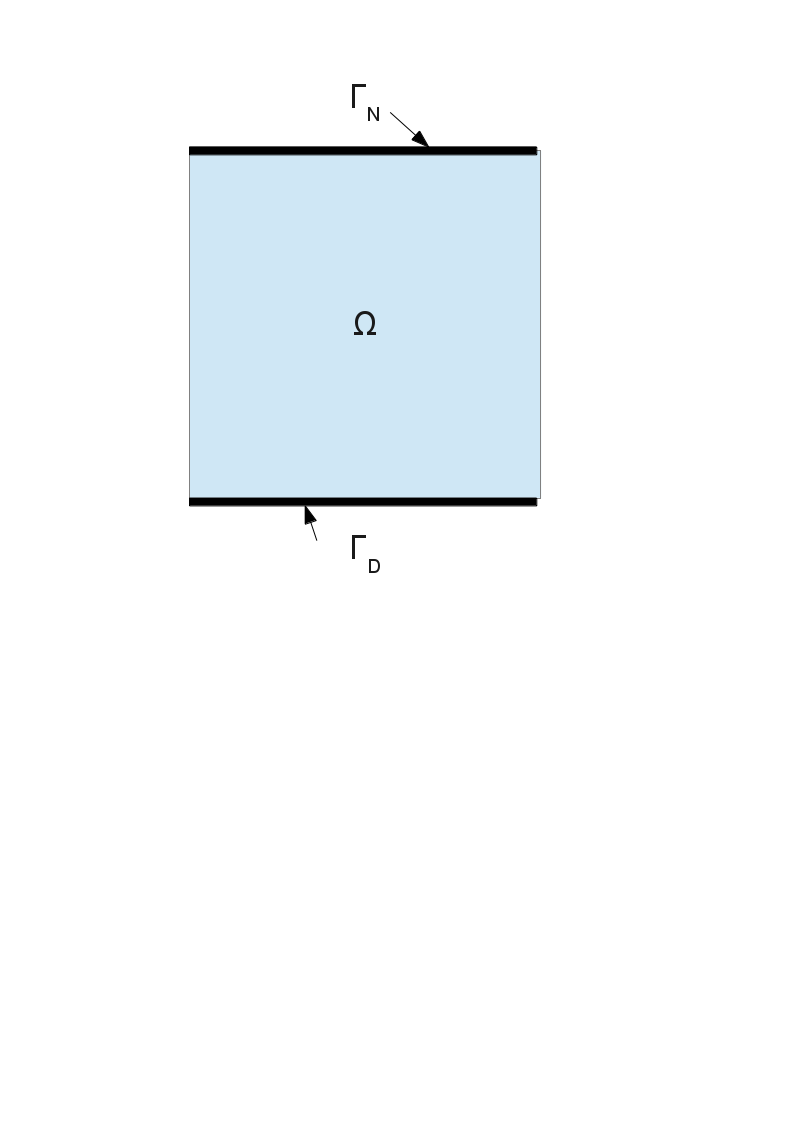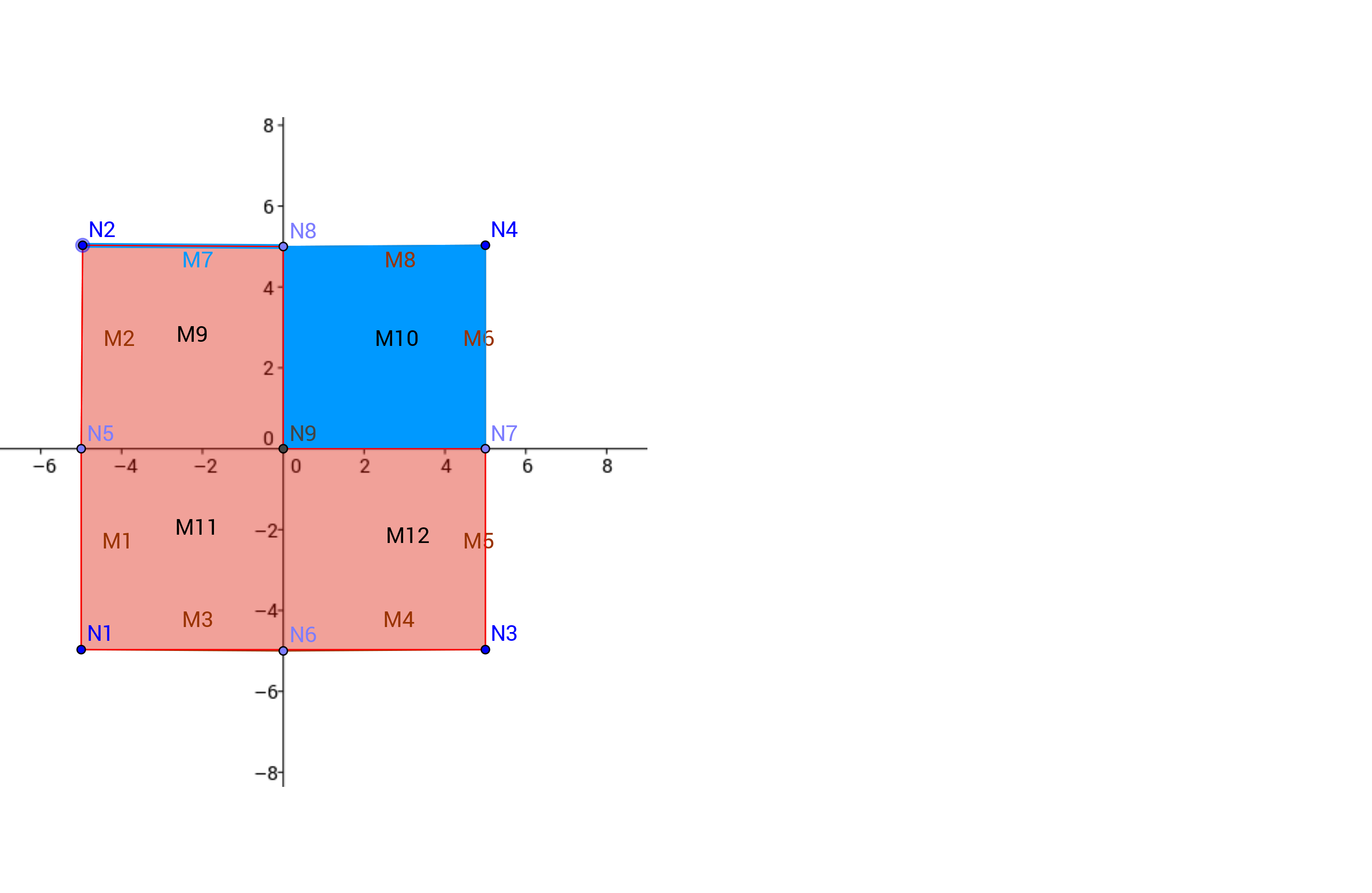2. Model problem#
We consider a 2D static elasticity problem, distributed over two processors.
2.1. Geometry#
The elastic domain is a square of extreme points (-50.50) and (50.50). We mesh this domain into 4 quadrangles.
2.2. Material properties#
\(E\mathrm{=}\mathrm{1,0}{10}^{11}N\mathrm{/}{m}^{2}\)
\(\nu \mathrm{=}\mathrm{0,3}\)
2.3. 2D modeling#
The model is assigned to the 4 quadrangular cells (group of 2D all cells) and to the 2 segments that constitute the upper edge of the domain (group of elements 1D up).
MODEL = AFFE_MODELE (MAILLAGE =MA,
AFFE =_F (GROUP_MA =( 'all', 'up',),
PHENOMENE =' MECANIQUE ',
MODELISATION ='C_ PLAN ',),
PARALLELISME =_F (DISTRIBUTION =' SOUS_DOMAINE ',),
);
A type of distribution of cells has also been defined (by sub-domain).
2.4. Limit conditions and loading#
Pressure is exerted distributed on the upper edge of the square, with ends (-50.50) (50.50):
PRESSION = AFFE_CHAR_MECA (MODELE = MODEL,
PRES_REP =_F (GROUP_MA ='up',
PRES =1000000000,),);
The base of the square is embedded: we apply the condition*DX* =0, DY =0 to the end segment \((-\mathrm{50,}-50)\) \((\mathrm{50,}-50)\).
This embedment is applied in two ways:
modeling A: with AFFE_CHAR_CINE
ENCASTR = AFFE_CHAR_CINE (MODELE = MODEL, MECA_IMPO =_F (GROUP_NO ='bottom', DX=0, DY=0,),);
B modeling: with AFFE_CHAR_MECA
ENCASTR = AFFE_CHAR_MECA (MODELE = MODEL, DDL_IMPO =_F (GROUP_NO ='bottom', DX=0, DY=0,),);
2.5. Distribution of the problem#
When creating the model, a distribution of the elementary calculations by sub-domain was chosen. We specify to the solver that the matrix is distributed:
MECA_STATIQUE (MODELE = MODEL,
CHAM_MATER = AFMAT,
EXCIT =( _F (CHARGE = PRESSION,),
_F (CHARGE = ENCASTR,),),
SOLVEUR =_F (METHODE =” PETSC “,
MATR_DISTRIBUEE =” OUI “,
ALGORITHME =” GMRES “,),);
The calculation is run on 2 processors.

